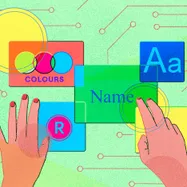
Software as a Story
We have worked with many Software as a Service companies to define their brand narrative. And we know this: as the tech market saturates, brands can’t expect their product to be enough. They need a brand story.
Every year, Forbes releases its list of the world’s 100 most valuable brands. In 2020, Apple topped the list, with an estimated brand value of $241.2 billion/€200.2 billion. You have to scroll down to find software-centric companies’ best practices; like Adobe or SAP. These players actually have a big advantage over Apple (and most of the 100 companies on the list): they don’t make physical products. SaaS companies normally have two strategic cost streams: talent (who make the product) and brand.
“The best brands are really well defined,” said Tim Calkins, a marketing professor at Northwestern University, in an article accompanying the Forbes list. “And when you have a brand that loses its distinctive meaning, it is almost always going to struggle in the market.”
This market not only wants to get the best talent, but also demands a brand story that engages consumers, investors, and employees to build living communities amid changing conditions and stiff competition.
SaaS companies have two strategic cost streams: talent and brand.
Telling the Story
A strong, purposeful brand narrative hits people in the heart and sticks in their brain. It needs to feel relevant to the current zeitgeist, and it needs to make a clear case for the brand’s value.
When research firm Kantar Millward Brown surveyed more than 10,000 advertisements from 2020, it found five characteristics among the most creative and effective. Among them: being meaningfully different. “[The] creative should also create impressions that position the brand in a meaningful and different way in people’s memories,” noted the report.
Companies that unite top-notch creative with a brand story that conveys a “meaningful difference” among competitors can grow twice as much as those relying solely on creative, according to Kantar’s research.
Branding is hardly the exclusive domain of B2C companies, but their B2B counterparts chronically fail to see its importance. Remarking at a previous Forbes list, branding expert Denise Lee Yohn noted that she often interacts with companies who think B2B purchase decisions are “too rational, [the] products are too functional, and competitive advantage is too technical” for branding to make an impact.
At #24, IBM needs no convincing about the importance of branding. The “M” in IBM may stand for “machines,” but much of what the company does these days is SaaS. Younger SaaS should take a cue from great-great-grandpa: That IBM still thrives 110 years into its history says a lot about the power of brand story. IBM started as a company that made, among other things, tabulating machines. These days it’s more known as an SaaS company, (though it still makes servers and the like). Yet its brand story has remained remarkably steady throughout its century-long history: IBM is a company that brings humans and machines together. In those early days, that meant tabulating machines. In the ‘80s “IBM compatible” era, it meant personal computers. Now it means AI, machine learning, and a host of SaaS products.

Naming as a Story Tool
Bringing the brand to life means using a variety of tools, such as PR and comms, UX, advertising, content, experiential. The list can get extensive, and most of these tools are living pieces, but there’s one you need to get right that will last much longer. Finding a name is one of the most difficult, decisive moments in a burgeoning company’s life. Registering a name, passing legal checks, and getting a reasonable dot-com is the golden trifecta, especially because every possible combination of four-letter dot-com domains was claimed by 2018. But the name still has to tell the right brand story; otherwise the trifecta won’t mean much.
Unfortunately, brands don’t have a lot of time to get it right, either. Because SaaS companies don’t have to manufacture anything, they can establish themselves, grow, and pivot quickly. Such a dynamic market can saturate in no time flat—which makes naming harder because few remaining names can hit the trifecta.
The brand should create impressions that position it in a meaningful and different way in people’s memories.
Cliché Mayday
It’s easy to emulate the looks and stories of the successful brands in the world. Over the past three decades, they’re the ones who established a brand language that became a cliché. And it is known as blanding.
You know the style. For the name, some quirky non-word or slightly altered real word—maybe without vowels? Or with an unnecessary extra letter?—probably two syllables long. Lower case instead of capitals. Bright colors instead of mature colors. Rounded corners instead of straight corners. Illustrations instead of photos.
It’s a cliché for a good reason—it worked. The style connected with customers because it worked in tandem with a brand narrative that felt more human and less institutional. But at its worst, it can feel infantilizing. And whenever something becomes a cliché or style default, it’s time for change. Innovation is long overdue. Whoever can combine a great SaaS product with an innovative brand that reinvents the current paradigm could be at the forefront of a new visual culture for startups. And maybe a spot on that Forbes 100.

Be brave and do better
Brand designers can do better and be braver. Entrepreneurs need to be more educated, demanding, and visionary clients. We’ve spent more than two decades thinking of software as a service. Tomorrow’s most successful brands will think of software as a story.
Illustrations © Ana Galvañ


